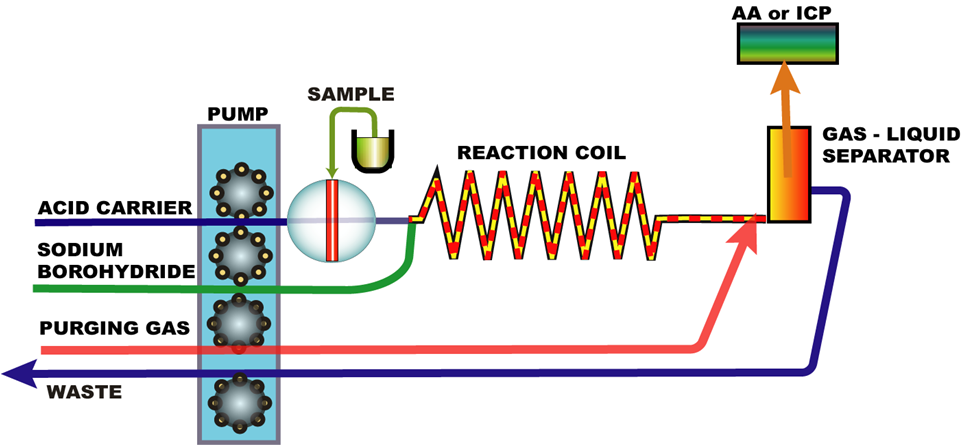Hydride Generation for AAS and ICP
Hydride generation-based Atomic Spectroscopy is routinely used for trace analysis of As, Bi, Ge, Hg, Pb, Se, Sn, and Te. In addition, assay of volatile compounds of Ag, Co, Cu, Ni, and Zn has been reported. Separation of the trace metals from complex matrices, analyte enrichment, fast reaction speed, and ease of automation were first demonstrated by Astrom (1982) in his pioneering work on the FI-based hydride AA assay of bismuth. By combining an acidified sample stream with a strong reducing agent (sodium borohydride), hydrogen and metal hydride is rapidly released, and the gaseous phase is separated with the aid of purging gas (air or argon) and swept into the detector.
1.3.16.

Atomic absorption spectroscopy, cold vapor atomic absorption spectroscopy, inductively coupled plasma spectroscopy, and inductively coupled plasma mass spectrometry have been used as detectors. The key component of the design is the gas-liquid separator.
Astrom O: Anal. Chem. 54, 90 (1982)
Fang, Z-L., Flow Injection Atomic Spectrometry, Wiley, Chichester, 1995
Sanz-Medel, A., (Ed.), Flow Analysis with Atomic Spectrometric Detectors, Elsevier, Amsterdam, 1999
Burguera, J.L., (Ed.) Flow Inj. Atomic Spectroscopy, Marcel Dekker, New York, 1989
Atomic Spectroscopic Detection. E.H. Hansen and M. Miró Ch14 in in S. D. Kolev, I. McKelvie, Ed. Advances in FIA
and Related Techniques. Elsevier, Amsterdam 2008.









